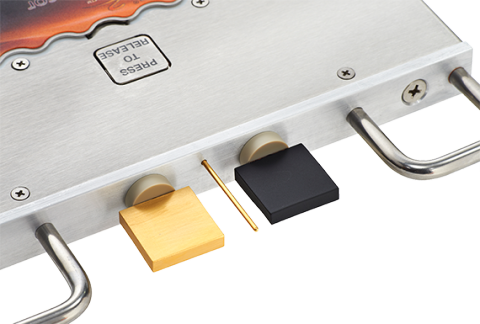Consistency is vital in baking and is the easiest thing to get wrong. Many bakeries have to increase output by using multiple lines, which is challenging to align with your baking standards when they have separate modes of heat transfer. Uniform products created with different commercial ovens require close monitoring of your oven heat transfer conditions with high-temperature heat flux profiling.
Monitoring the flow of energy in your product line provides invaluable insights into the heat flux profiles of your ovens. As you compile and analyze these data reports, the information yielded is the key to taking control of your bake. Reading Thermal is an expert in high-temperature heat flux profiling solutions, giving you the tools you need to ensure your products have a consistent taste, texture, and appearance. Our SCORPION® 2 Heat Flux Sensor is designed to be placed on the band with your product, going through the baking process simultaneously to accurately and comprehensively compile data about the heat transfer process. By monitoring this data in real-time, you can identify areas within your bakery that deliver inconsistent results and adjust accordingly to maintain consistency across all your products and lines.
Monitoring the Types of Heat Present in Your Baking Process
A well-constructed baking process is driven by the careful application and management of the three different types of heat transfer:
- Convection
- Radiation
- Conduction
Each of these plays a different role in baking to produce a high-quality product that’s delicious, safe, and perfectly baked. To provide the most precise insight into the variables in your oven heat flux profile, the SCORPION® 2 Heat Flux Sensor is placed on the line band and sent through the oven for in-process monitoring and data collection.
Convection
Convection is the heating process where hot air is forcibly blown directly onto the product’s surface. Usually controlled by a fan, convection rapidly removes moisture while heating the product’s exterior. Because it uses heated air to bake, convection is largely superficial as it primarily affects the exterior of the product, unable to penetrate too deeply to the core or the underside. Controlling air velocity further impacts the efficiency of the convection heat transfer.
Radiation
While convection provides the majority of the total heat experienced by the product, radiation heat transfer is more critical in ensuring it bakes properly. Transferred from an object of high temperature to objects of low temperature, this type of heat flux is responsible for penetrating the core of the product, ensuring that the entirety of your line is baked correctly. This further removes moisture from the core of the baking products, heating the center and prompting thorough, complete baking.
Conduction
Convection and radiation provide the primary medium through which the baking process occurs. Conduction is the heat transfer method where neighboring materials in contact with each other transfer heat, i.e., the conveyor band and your products. Conduction occurs throughout the process, absorbing the heat generated by convection and radiation and heating the product from the bottom to give it a crisp, well-baked layer.
The SCORPION® 2 Heat Flux Sensor provides extensive data analysis of your ovens’ convection and radiation heat transfer rates. By providing comprehensive, intuitive data reports and graphs based on the data compiled, you can make informed decisions using high-temperature heat flux profiling as a basis to improve the baking process and fix issues. If you’re interested in our services, call us at (610) 678-5890 Ext. 2, or contact us online for more details about our innovative products.

